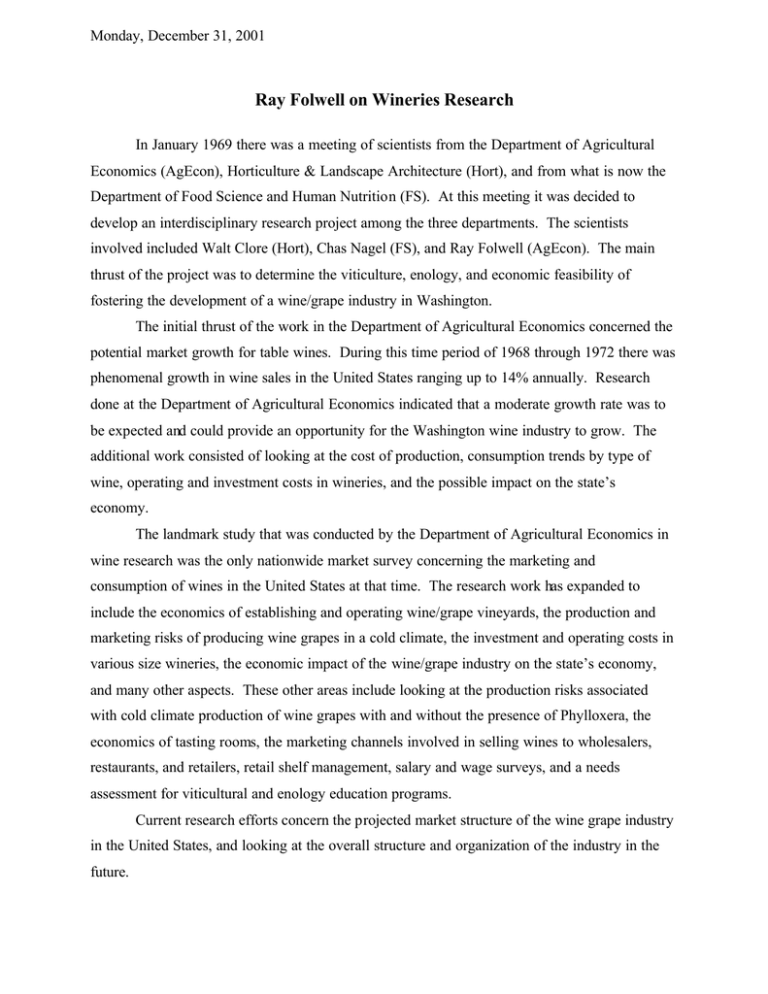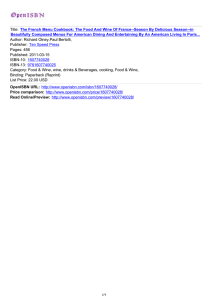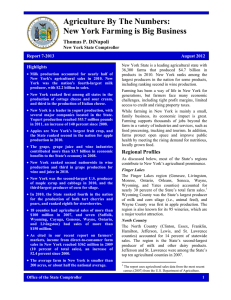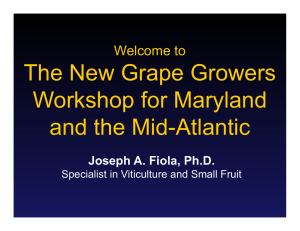Ray Folwell on Wineries Research
advertisement

Monday, December 31, 2001 Ray Folwell on Wineries Research In January 1969 there was a meeting of scientists from the Department of Agricultural Economics (AgEcon), Horticulture & Landscape Architecture (Hort), and from what is now the Department of Food Science and Human Nutrition (FS). At this meeting it was decided to develop an interdisciplinary research project among the three departments. The scientists involved included Walt Clore (Hort), Chas Nagel (FS), and Ray Folwell (AgEcon). The main thrust of the project was to determine the viticulture, enology, and economic feasibility of fostering the development of a wine/grape industry in Washington. The initial thrust of the work in the Department of Agricultural Economics concerned the potential market growth for table wines. During this time period of 1968 through 1972 there was phenomenal growth in wine sales in the United States ranging up to 14% annually. Research done at the Department of Agricultural Economics indicated that a moderate growth rate was to be expected and could provide an opportunity for the Washington wine industry to grow. The additional work consisted of looking at the cost of production, consumption trends by type of wine, operating and investment costs in wineries, and the possible impact on the state’s economy. The landmark study that was conducted by the Department of Agricultural Economics in wine research was the only nationwide market survey concerning the marketing and consumption of wines in the United States at that time. The research work has expanded to include the economics of establishing and operating wine/grape vineyards, the production and marketing risks of producing wine grapes in a cold climate, the investment and operating costs in various size wineries, the economic impact of the wine/grape industry on the state’s economy, and many other aspects. These other areas include looking at the production risks associated with cold climate production of wine grapes with and without the presence of Phylloxera, the economics of tasting rooms, the marketing channels involved in selling wines to wholesalers, restaurants, and retailers, retail shelf management, salary and wage surveys, and a needs assessment for viticultural and enology education programs. Current research efforts concern the projected market structure of the wine grape industry in the United States, and looking at the overall structure and organization of the industry in the future.





